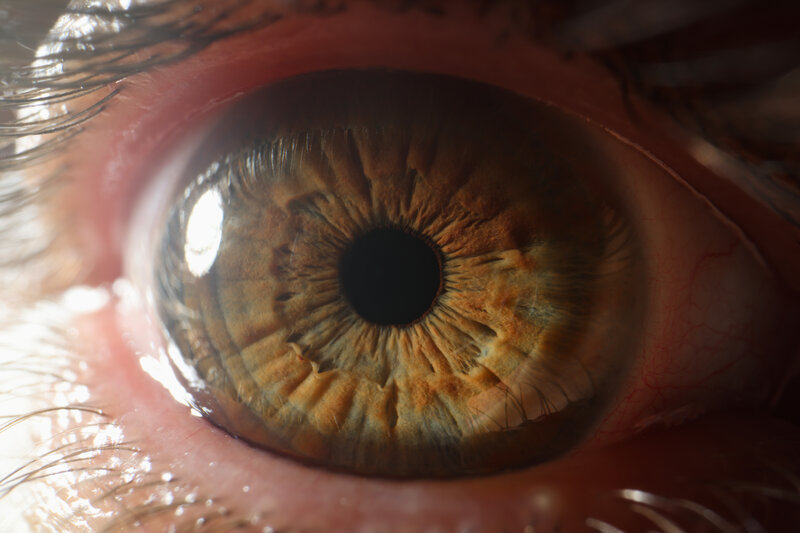
Retinal Detachment
WHAT IS A RETINAL DETACHMENT?
 The retina is a thin membrane that forms the light-sensitive layer at the back of the eye. Sometimes holes or tears form in the retina, often because of pulling on the retina by the vitreous (the jelly of the eye). Once a hole or tear has formed, fluid from the vitreous can seep behind the retina, and the retina then gradually separates from the eye wall. As this happens there is a corresponding loss of vision, and if it goes untreated many patients lose most or all their sight. The loss of vision can take days, weeks or months, depending on the position of the tear(s) in the retina. Detachments are more common in myopes (short-sighted people), in those with a family history of retinal detachment, and following eye trauma.
The retina is a thin membrane that forms the light-sensitive layer at the back of the eye. Sometimes holes or tears form in the retina, often because of pulling on the retina by the vitreous (the jelly of the eye). Once a hole or tear has formed, fluid from the vitreous can seep behind the retina, and the retina then gradually separates from the eye wall. As this happens there is a corresponding loss of vision, and if it goes untreated many patients lose most or all their sight. The loss of vision can take days, weeks or months, depending on the position of the tear(s) in the retina. Detachments are more common in myopes (short-sighted people), in those with a family history of retinal detachment, and following eye trauma.
Patients with retinal detachment require prompt surgery to prevent further visual loss, and to regain part or all of their lost vision
How is retinal detachment surgery done?
The most common method now is an operation called vitrectomy. This involves removing the vitreous gel from the eye so that it can no longer pull on the retina. The retina is pushed back into position with a gas bubble, and then made to stick down with laser or freezing treatment , which seals the retinal tears. The gas bubble remains in the eye for days to weeks, keeping the retina pressed into place. The gas gradually disappears, and is replaced by the aqueous humour, the natural fluid that the inside of the eye produces.
Another surgical method involves sealing the retinal tears with laser or freezing treatment, and stitching a silicone “explant” to the eye wall to create a “dent” in the surface of the eye. This supports the torn area. The explant is left in place, and when the eye settles it cannot be seen, so that the eye looks normal. Sometimes a bubble of inert gas is injected into the eye to press on the retina from the inside..
How successful is the surgery?
Over 80% of retinal detachments operated upon by specialist vitreoretinal surgeons in the UK can be successfully repaired with one operation, and the success rate increases to over 90% with subsequent surgery. There are some detachments which cannot be treated successfully even with multiple operations. Depending on whether the central retina has been involved, the detail vision may be affected. The peripheral vision is usually regained.
What are the risks of surgery?
There is a risk of cataract formation, particularly in older people. The pressure in the eye may be temporarily increased, this can be treated with drops. There may be double vision if an explant is used, but this usually subsides without treatment. Serious bleeding into the eye, or infection, can occur and caused marked visual loss, but these complications are extremely rare and far outweighed by the necessity to treat the detachment. The focus of the eye may be slightly altered, requiring a change of spectacles.
What type of anaesthetic is used?
Modern retinal surgery is performed with local anaesthetic, sometimes supplemented with sedation.
Is a hospital stay necessary?
In the modern setting, it is possible to carry out all retinal detachment surgery for adults on a daycase basis, so you can go home on the same day. If you have a gas bubble in the eye, it is likely that you will have to keep your head in a certain position for a few hours each day (this is known as “posturing”) so the gas bubble presses on the healing part of the retina. You may have to do this for one or two weeks.
How long is the recovery period?
It usually takes about 2 months to be sure that the retina is successfully treated, although the eye may settle more quickly. A reattached retina may go on improving for 12 months or more.
What are the do’s and don’ts after surgery?
No heavy exercise should be undertaken for a few weeks. If you have a gas bubble in your eye it is forbidden to fly, and you should ask your doctor when you may fly again.
What can I expect after the surgery?
Your eye will be red, gritty, and watery for a week or two. You will be using drops that may have to be instilled frequently. Visual recovery is often slow, and whilst a gas bubble is present in the eye the vision may be very poor. Once the gas has disappeared, vision can improve quite quickly.

